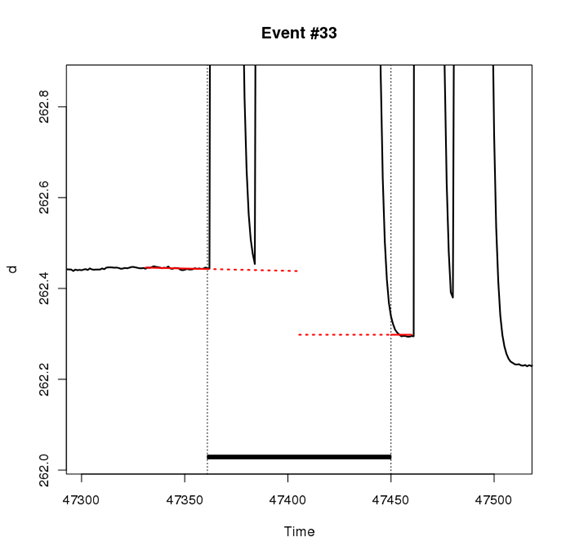Measuring food uptake differentially
Let's say you need to measure the food uptake of an experimental animal, which of course could mean any creature, including you. For the sake of simplicity, imagine a mouse or a rat feeding intermittently from a food hopper.
You'd think that all you needed to do was weigh the hopper periodically, such as at the start and end of each 24-hour cycle, and see how much its mass decreases. You'd be right, in a sense. That will indeed measure the change in food mass over that period. But if you think that the change in mass is an accurate representation of the amount of food the critter ate, you might be very wrong.
This is because most food, including rat or mouse chow, is hygroscopic. It absorbs water from the water vapor in the air to an extent roughly proportional to relative humidity. And relative humidity is anything but constant, particularly inside a cage. As a result, neither is food mass.
To get accurate food uptake figures, you need to measure differentially. In other words, food uptake must be calculated from the difference in food hopper masses just before and just after each feeding event. This figure* (where d is food hopper mass) illustrates the point.

As you can see, a feeding event corresponds to a large increase in the variance of the measured food hopper mass. A good food uptake calculation algorithm, such as the one used by Promethion, searches for sections of stable mass readings immediately before and after each such event. Then it compares those readings and tests them for statistical significance. If a significant difference is found, the event is designated as a food uptake event. If not - and a surprising number of interactions with the food hopper don't result in significant food uptake - then it's ignored.
As a result, slow changes in hopper mass resulting from fluctuations in relative humidity no longer distort food uptake data.
True, but analyzing the problem at a deeper level, the mass of food that is eaten, however accurately it's measured, still reflects the sum of two partitions:
- The dry weight of the food that is eaten
- The weight of water associated with the food
The water content of typical mouse or rat chow is about 10-15%, so the error can be significant. Dry food mass would be a much better measure of food uptake.
Funny you should say that. Because the Promethion system (unlike any other food uptake measurement or metabolic phenotyping system) measures water vapor partial pressure in the air pulled from the cage, it is possible, knowing this, to back-calculate food mass to its "dry" state, mathematically. All that is required is a good characterization of the chow's mass versus ambient water vapor partial pressure.
Not a single researcher anywhere in the world is yet doing this. But it's possible (though only with Promethion). I wonder who will be the first to fill this vacuum?
-- John Lighton
* Thanks to Thomas Förster, Ph.D., Sable Systems International's expert in-house data analysis and data presentation consultant, for creating the graph.
- Log in to post comments